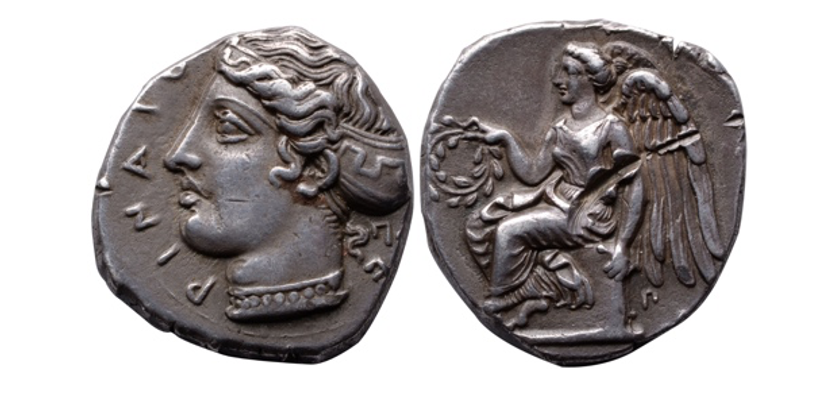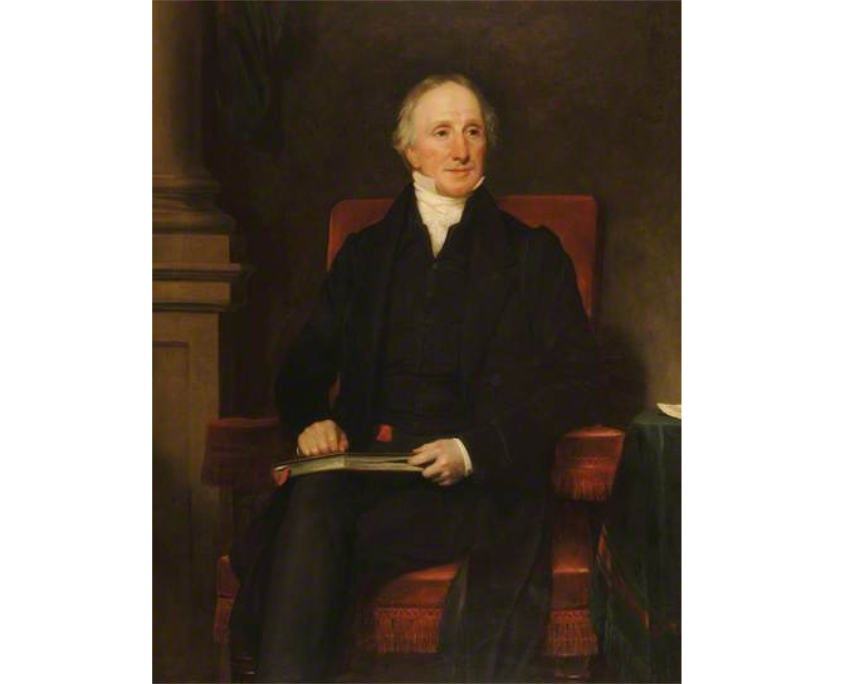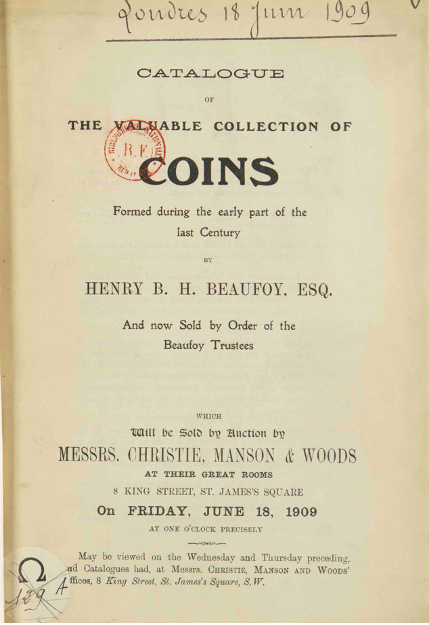Beaufoy, Henry Benjamin Hanbury (1786-1851)
by John Voukelatos
Henry Beaufoy, the son of Mark Beaufoy was born in Switzerland, but would live most of his life in Britain. His father Mark was apprenticed to a gin distiller in Bristol; however, being a Quaker, he left this business going to the Netherlands to train in vinegar brewing. The family business he established, Beaufoy & Co. would become one of the largest brewers of vinegar in Britain and Ireland, and one of the largest manufacturers in Lambeth by 1810. Ultimately Henry Beaufoy would become one of the senior partners of this business. He became a Fellow of the Royal Society in 1815 and was also a Fellow of the Linnean Society. He also established four scholarships at the University of Cambridge and donated £10,000 to the City of London School. In 1851 he also built and endowed a new School in Newport Street, Lambeth. His wealth provided him the means to establish one of the finest private libraries in England; including the first four folio editions of Shakespeare.
A portion of the library of 25,000 books was dispersed by the Beaufoy Trustees in the Christie, Manson & Woods auction of June 7-10, 15-17, 1909 (2033 lots), with the Shakespeare folios being sold four years later by the same auction house on 16 July 1912. A further 644 lots were sold by Puttick and Simpson, London, 13-14 May 1912. He would also acquire a collection of London traders, tavern and coffee house tokens which were donated to the Corporation of London. The collection was published by Jacob Henry Burn in 1855, A Descriptive Catalogue of the London Traders, Tavern and Coffee-House Tokens current in the Seventeenth Century presented to the Corporation Library by Henry Benjamin Hanbury Beaufoy.
As with his library, his collection of coins was also offered at auction in 1909 by Christie, Manson & Woods. The sale included early British coins (lots 1 – 11), English gold coins (lots 12 – 41), English silver coins (lots 42 – 74), Scotch Gold coins (lots 75 – 83), Scotch Silver (84 – 95), Greek Gold coins (95 – 102), Greek silver coins (lots 103 – 128), Roman Gold coins (lot 129 – 182), Roman Silver consular denarii (lots 183 – 192), Roman Imperial Denarii (lots 193 – 201), Roman bronze coins (lots 201 – 223), casts of Roman gold (lot 224) and quarter noble of Edward II and a Ducat (lot 225), and forgeries in silver and base metal of a variety of coins (lot 226). Unfortunately, the catalogue did not illustrate the coins. Furthermore, we have no idea how he acquired his coins and the date of their purchase. A perusal of early 19th century annotated catalogues has not provided us any further clues.

Stater, Terina, 420 BC. 7,60g. Provenance: Henry Benjamin Hanbury Beaufoy (1786 – 1851), acquired early 19th century. Christie’s, 18th June 1909, Lot 124 (1 of 6 coins); Frédéric Robert Jameson (1861-1942), 481; J. Schulman, 28 – 31 March 1960, Lot 1036, Pl. 13; Athos Moretti collection, Bank Leu, Fixed Price list, Bruttium, December 1961, Lot 125; Leu Numismatics 79, 31 October 2000, Lot 316; Collection of a Professor of Mathematics, Iowa, Private treaty Art Ancient 2018. Published : Collection R. Jameson, Monnaies Grecques Antiques, 1913 – 1932, IA, coin 481. Image: Art Ancient Sale 2018.
Condition did not appear to be the only criteria for his selection of coins, a few were worn, bent and or pierced. It has not been possible to trace many of these coins, although one a rare Terina starter was acquired by Robert Jameson and is now in a private collection. From the same group lot that offered this coin is also a silver Acarnanian didrachm, obv with the head of a beardless Acheloos, behind ΛΥΚΟΥΡΓΟΣ, reverse Apollo seated to left holding bow, ΑΚΑΡΝΑΝΩΝ, and in the front ΘΕ monogram – fine and rare, but pierced. No doubt this coin may be identified by this description one day.

Two lots from the Christie, Manson & Woods sale were published and illustrated by Bernard Roth in 1913 – Coins of Ancient Gaul Channel Island. See some of the coins here.
Two of the lots from this sale – lot 8 (Gaulish Staters (2), both very base metal; barbarous imitation of a stater of Lysimachus; another, quarter stater size, with winged horse to left; and Merovingian Triens (2)-all fine – 6) and lot 9 (Silver Staters of Hod Hill type (2); Quarter Stater, obv. boar to right, rev. horse to left as Evans, XVI. 12- -fine and rare; Iceni and Nunney types (3); Channel Islands Billon (2); Gaulish imitations of Greek tetradrachms, and small Gaulish silver (19); and two in tin -29) were published and illustrated by Bernard Roth in 1913 – Coins of Ancient Gaul Channel Island.

Gold Coin from Colchis. Provenance: Henry Benjamin Hanbury Beaufoy (1786 – 1851), acquired early 19th century. Christie’s, 18th June 1909,Lot 8; Horace Sandars Collection, SWH, 12 February 1923, Lot 41. Celtic Coins, Bernard Roth 1912, No 234. Left Image: Celtic Coins, Bernard Roth 1912, No 234. Right Image: Horace Sandars auction of Celtic coins by Sotheby Wilkinson Hodge, 1923.
The gold coin from Colchis would appear in the Horace Sandars auction of Celtic coins of Sotheby Wilkinson Hodge in 1923. The sale of the Beaufoy collection over half a century after Beaufoy’s death is reminiscent of the sale of the Strozzi collection which appeared at auctions some two decades after the collector’s death. A member of Parliament for the seat of Hackney, his portrait by Henry William Pickersgill (1782 – 1875) hangs in the Guildhall Art Gallery. A lithograph of this oil painting appeared in the Burn book of 1855.
We would like to thank John Voukelatos for kindly contributing this article.









